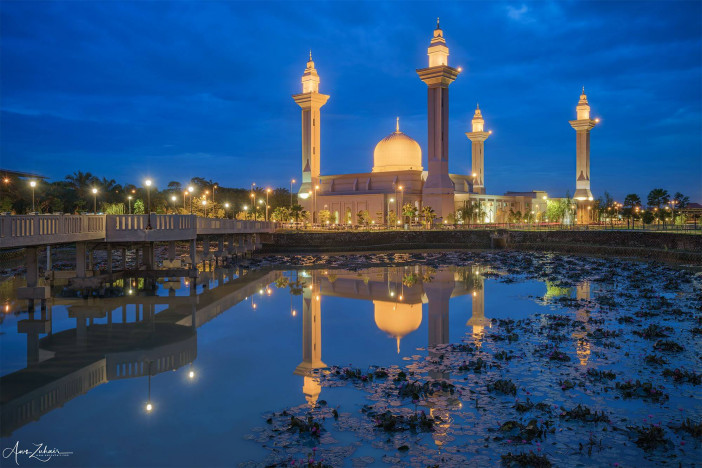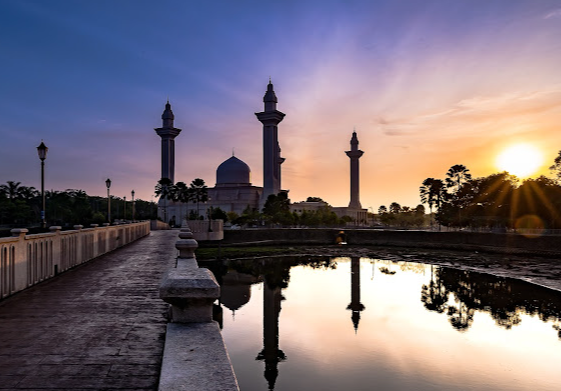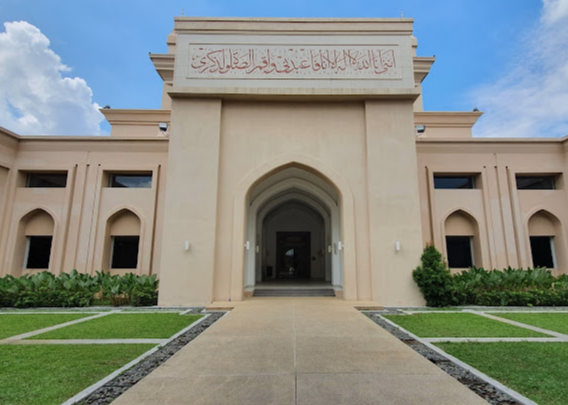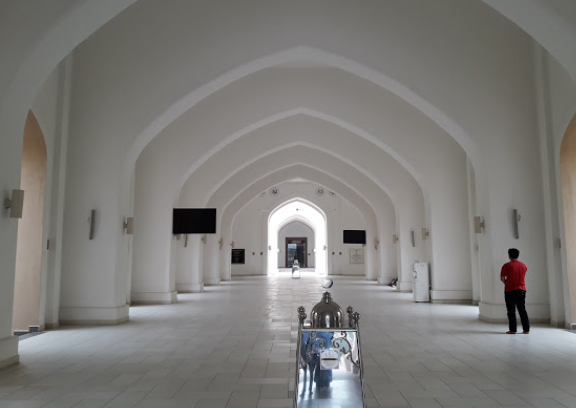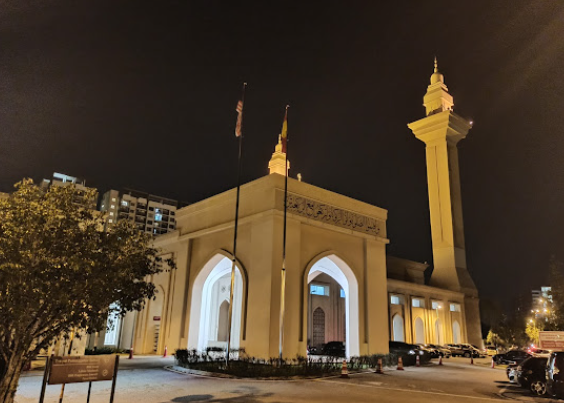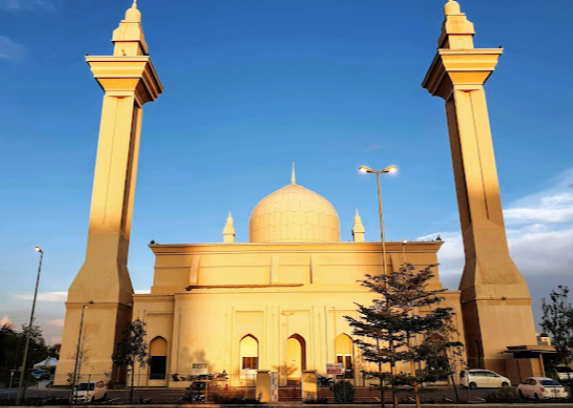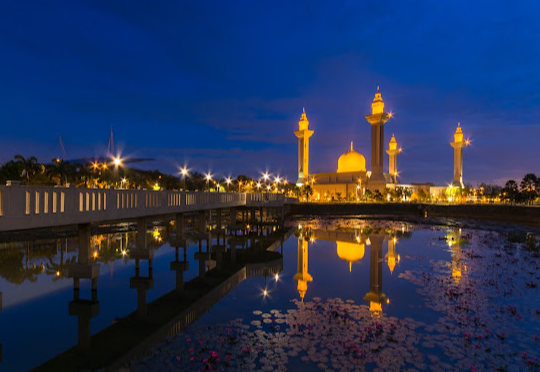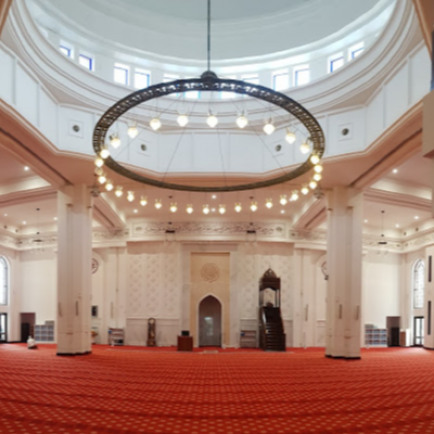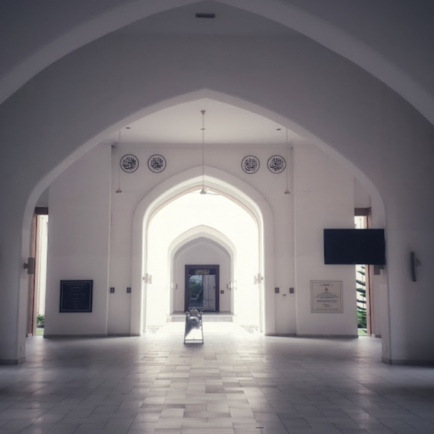Masjid Diraja Tengku Ampuan Jemaah
Urban and Architectural
The initial idea of the designer was to build the mosque with a modernist approach. It was later revised by the principal of Kumpulan Senireka, Dato’ Seri Nik Mohamed Mahmood, who felt a mosque should be in a familiar form and shape that would remind people about the religion of Islam. The architect established a strong connection with the architecture of the Al-Masjid Al-Haram in Makkah, Saudi Arabia, where most Muslims have a peaceful and tranquil feeling while worshipping there. This is achieved through the application of the principles of good planning layout and human proportions.
The interior is created in a grandeur form, with four main piers that stand across the rectangular hall. A large round chandelier hangs from the main dome, with the female prayer gallery overlooking the main prayer hall from the upper floor. The floor area is covered with a warm-hued red carpet, with the qibla wall finished with Malay songket plaster finished patterned. The mihrab niche is arranged and segmented with marble. The Malay design influence was incorporated through using the cengal timber carving from Kelantan.
Description
Details
Location
Lot Masjid, Jalan Bazar U8/98, Seksyen U8, Bukit Jelutong, 40150 Shah Alam, Selangor, Malaysia
Owners
Sultan Salahuddin Abdul Aziz Shah / Sime Darby Property
Year of Build
2013
Drawings
Map
Urban and Architectural
The initial idea of the designer was to build the mosque with a modernist approach. It was later revised by the principal of Kumpulan Senireka, Dato’ Seri Nik Mohamed Mahmood, who felt a mosque should be in a familiar form and shape that would remind people about the religion of Islam. The architect established a strong connection with the architecture of the Al-Masjid Al-Haram in Makkah, Saudi Arabia, where most Muslims have a peaceful and tranquil feeling while worshipping there. This is achieved through the application of the principles of good planning layout and human proportions.
The interior is created in a grandeur form, with four main piers that stand across the rectangular hall. A large round chandelier hangs from the main dome, with the female prayer gallery overlooking the main prayer hall from the upper floor. The floor area is covered with a warm-hued red carpet, with the qibla wall finished with Malay songket plaster finished patterned. The mihrab niche is arranged and segmented with marble. The Malay design influence was incorporated through using the cengal timber carving from Kelantan.
Description


